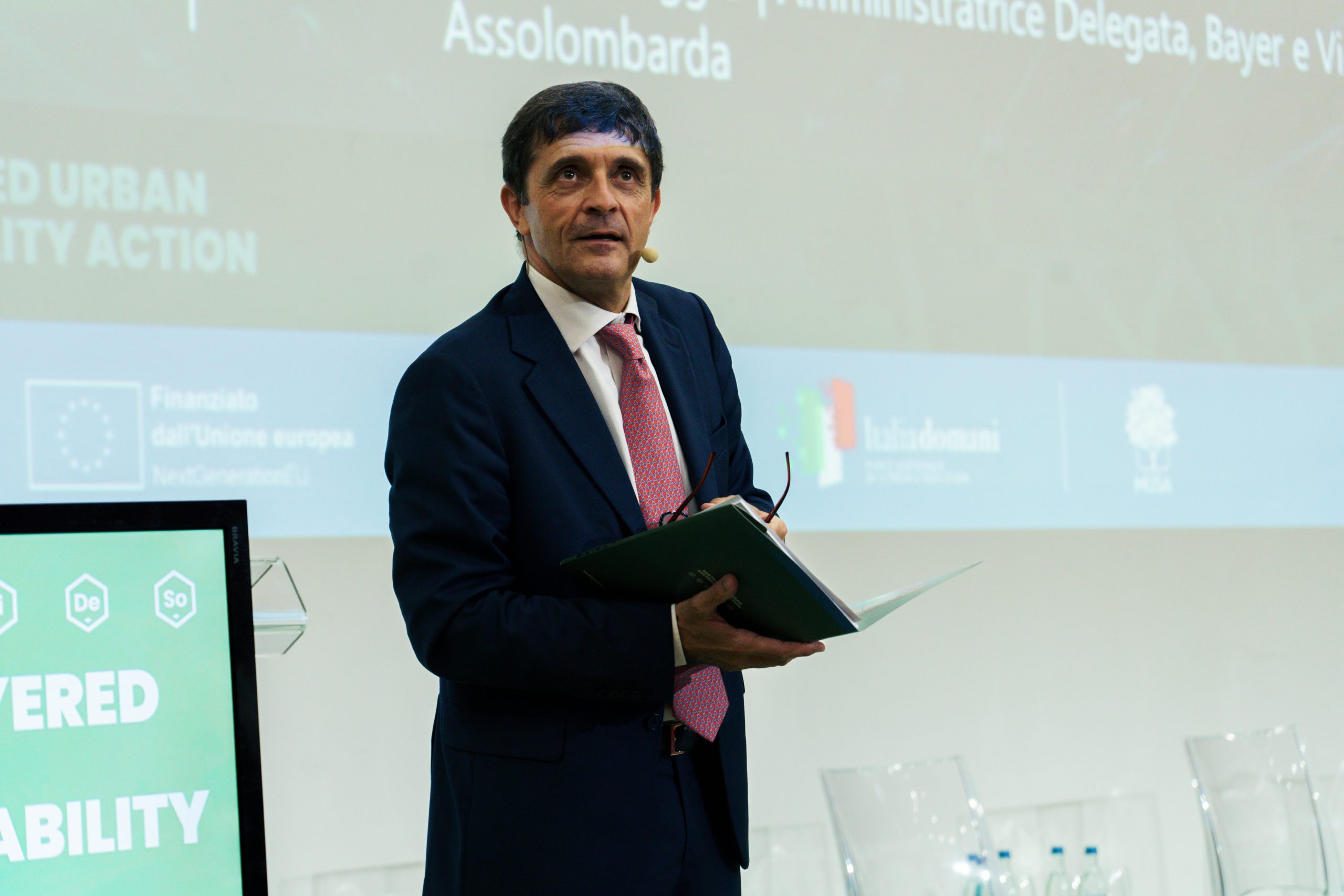Vittorio Biondi, Director of MUSA, discusses the evolution of the MUSA ecosystem: a model that unites universities, businesses, and institutions for sustainable and shared urban transformation.
The event “Research and Development for the City of the Future” promoted by MUSA – Multilayered Urban Sustainability Action in collaboration with Assolombarda and A2A, has recently concluded. Two days of meetings and discussions at Assolombarda’s headquarters brought together the academic world, institutions, and businesses around a common goal: to redesign cities in a more sustainable, technological, and inclusive way, starting with dialogue and collaboration between different areas of expertise.
For Vittorio Biondi, General Director of MUSA, this was “a crucial moment in the project’s journey. After more than two years of work, and with the first phase nearing completion, it was time to take stock and connect the many facets of the ecosystem. The event was therefore an opportunity to bring together and foster dialogue between researchers from the four founding universities – University of Milano-Bicocca, University of Milan, Polytechnic University of Milan, and Bocconi University – and the production system, involving not only companies already part of the network, but also entities interested in the results of ongoing research and experiments.”
These two days represented, in Biondi’s words, “a concrete example of what it means to build an ecosystem for innovation,” capable of generating added value for the territory through cooperation between universities, businesses, institutions, citizens, and the third sector. A vision in which the PNRR fits not only as a source of resources, but as a lever to strengthen the competitiveness of the Milanese territory, its metropolitan area, and the entire Lombardy region.”
Looking to the future, MUSA’s journey does not stop. “A phase of listening and dialogue with all members, both public and private, is already underway to understand expectations and perspectives beyond 2026. And the signs are encouraging: there is a strong desire to continue the project even after the extraordinary funding phase ends. Reinforcing this perspective is the imminent entry of the Università Cattolica del Sacro Cuore into the corporate structure, which will thus become the fifth major Milanese university to join MUSA. This is an important signal that opens the way for new possible memberships.”
The goal, Biondi concludes, is “to provide continuity and solidity to an experience that has proven to be able to concretely impact urban transformation. Not only through technologies and research, but through a real paradigm shift: building the future of cities together, overcoming the boundaries between public and private, between research and business, between vision and reality.”





